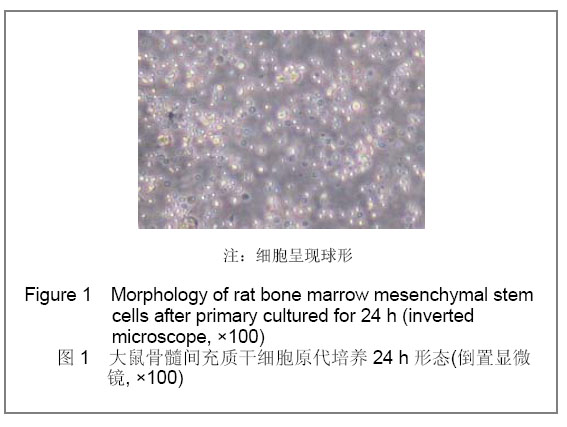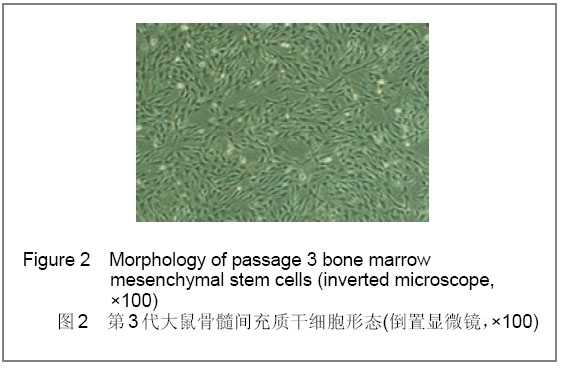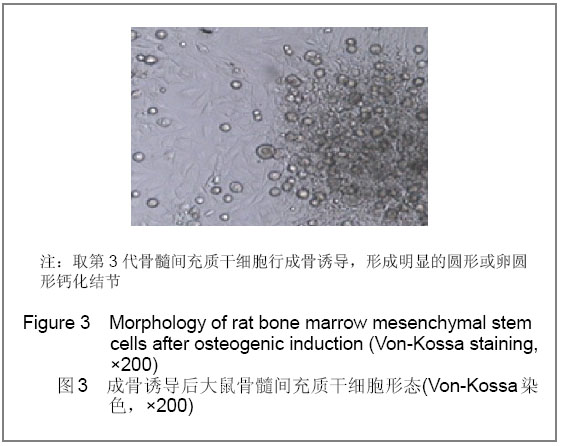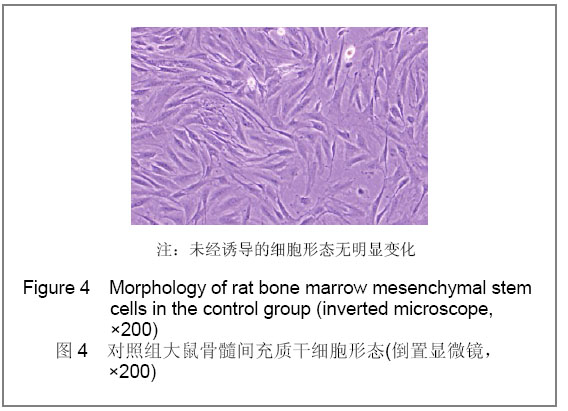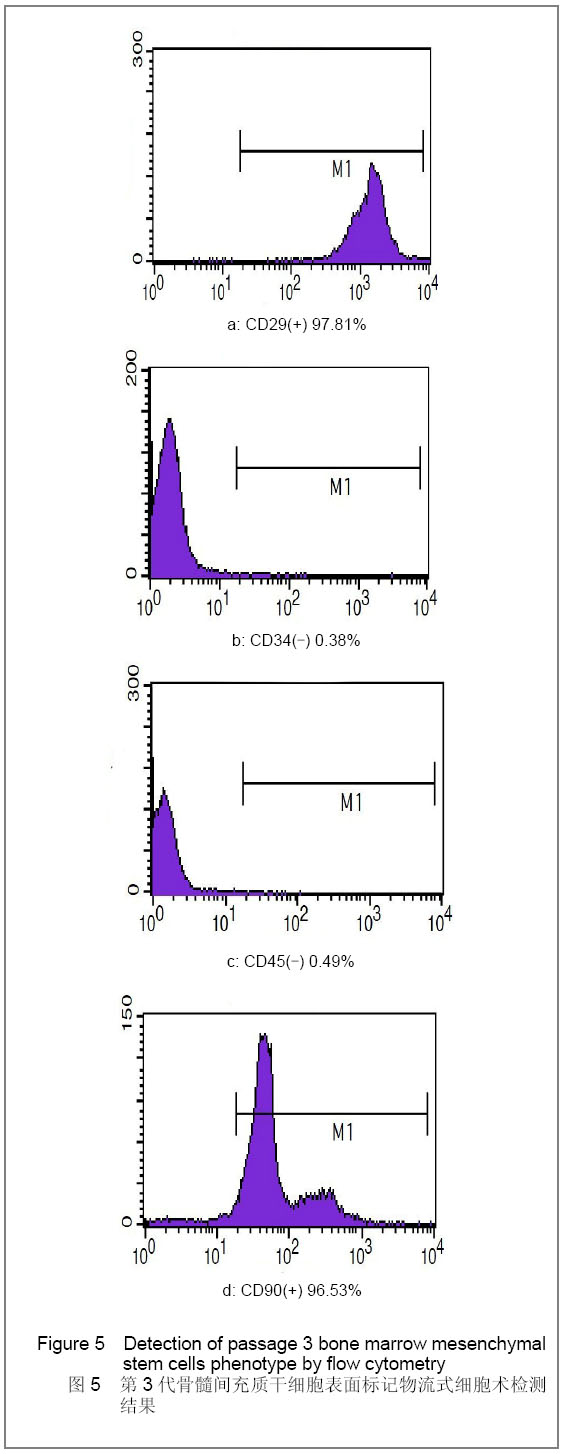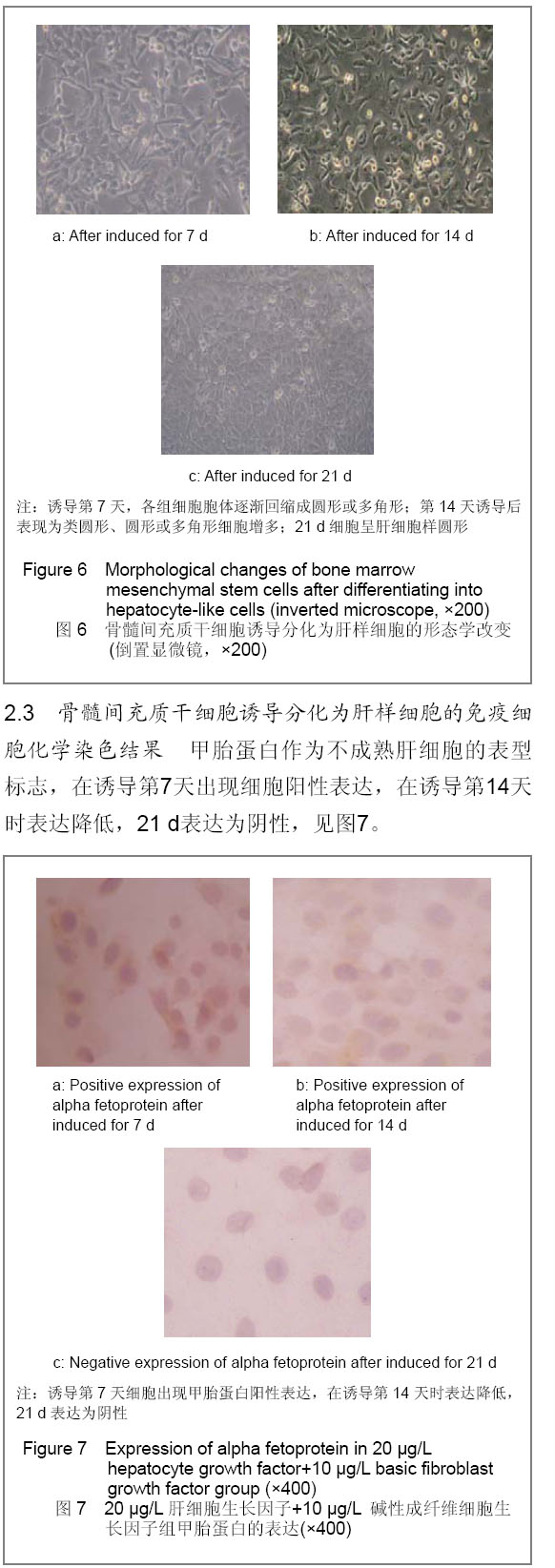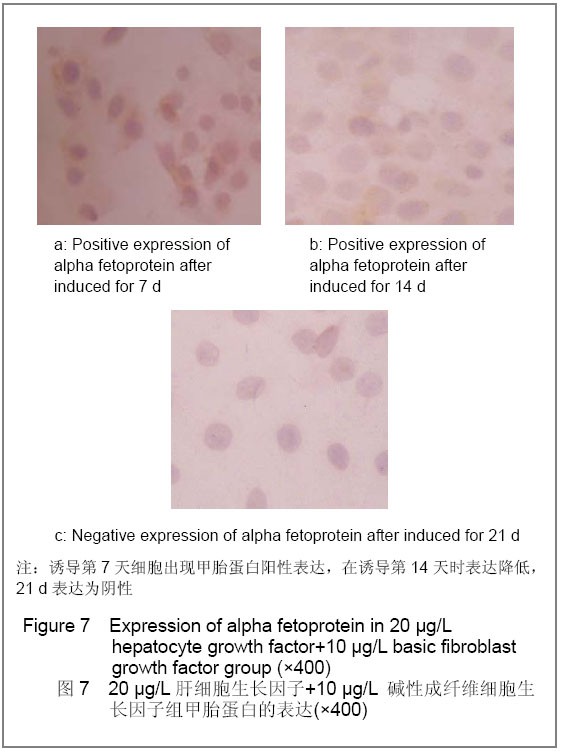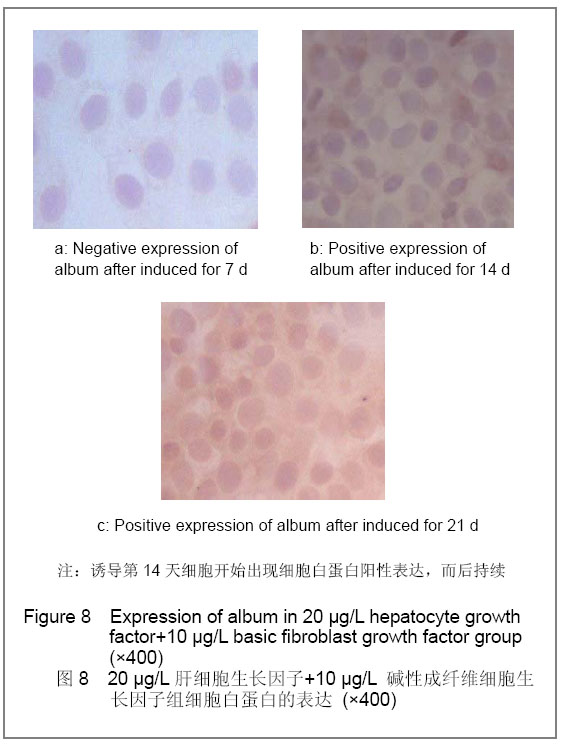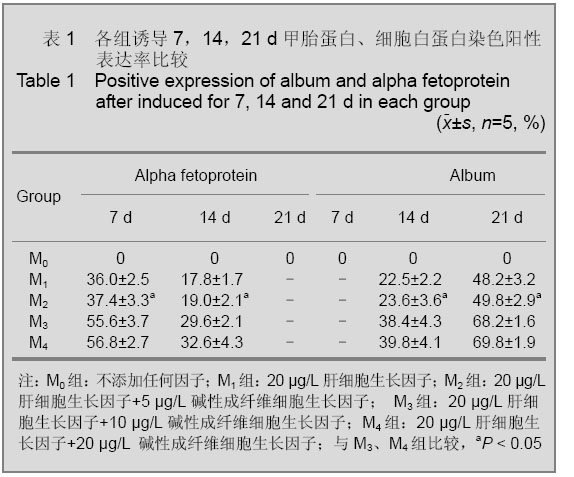| [1] Belema-Bedada F, Uchida S,Martire A, et al. Efficient homing of muhipotent adult mesenchymal stem cells depends on FROUNT mediated clustering of CCR2. Cell Stem Cell. 2008; 2: 566.[2] Tang W, Chen DF. Chongqing Yixue. 2009;11(38):2736-2737.唐雯,陈东风.自体骨髓干细胞移植治疗终末期肝病的研究进展[J]. 重庆医学,2009,11(38):2736-2737.[3] Zhang GX, Zhao ZQ. Zhonghua Xiaohua Zazhi. 2004;24(6): 382-384.张国新,赵志泉.肝脏干细胞移植[J].中华消化杂志,2004, 24(6): 382-384.[4] Fukuchi Y, Nakajima H, Sugiyama D, et al. Huanm placenta derived cells have mesenchymal stem/progenitor cell potential.Stem Cell. 2004;22:649-658.[5] Romanov YA, Zharkova NA.Regularities of spatial and time organization of the proliferative system of small intestinal cryptic epithelium in intact mice in thecircahoralian biological rhythm of its cells multiplication. Biol Med. 2010;141(1): 133-141.[6] Bosnakovski D, Mizuno M, Kim G, et al. Chondrogenic differentiation of bovine bone marrow mesenchymal stem cells in pellet cultural system. Exp Hematol. 2004;32(5): 502-509.[7] Ohgushi H, Caplan AI. Stem cell technology and bioceramics: from cell to gene engineering. Biomed Mater Res. 1999;48: 913-927.[8] Zheng J, Wang PX, Zhou L. Guangzhou Zhongyiyao Daxue Xuebao. 2008;23(4): 356-359.郑杰,王培训,周联.骨髓间充质干细胞分离及条件培养基在其培养扩增中的作用[J].广州中医药大学学报, 2008, 23(4): 356-359.[9] He NH, Zhao WL, Wang YM. Zhonghua Ganzangbing Zazhi. 2005;13(3):213-219.何念海, 赵文利, 王宇明.人胎儿骨髓间充质干细胞的分离、培养及生物学特性鉴定[J].中华肝脏病杂志,2005,13(3):213-219.[10] Xiang P, Zhang LR, Chen ZG, et al. Zhongguo Bingli Shengli Zazhi. 2005;17(7): 598-601.项鹏,张丽蓉,陈振光,等.成人Mscs定向诱导为脂肪细胞的研究[J].中国病理生理杂志, 2005, 17(7): 598-601.[11] Okamoto R,Matsumoto T,Watanabe M,et al. Regeneration of the intestinal epithelia: regulation of bone marrow-derived epithelial cell differentiation towards secretory lineage cells. Hum Cell. 2006;19(2): 71-75.[12] Li ZY, Tian WD, Liu L, et al. Huaxi Kouqiang Yixue Zazhi. 2008;23(2):152-154.李志勇,田卫东,刘磊,等.绿色荧光蛋白转基因小鼠骨髓间充质干细胞的多向分化潜能研究[J].华西口腔医学杂志, 2008, 23(2): 152-154.[13] Stock P, Bruckner S, Ebensing S, et al. The generation of hepatocytes from mesenchymal stem cells and engraftment into murine liver. Nat Protoc. 2010;5(4):365-368.[14] Service RF. Tssue engineers build new bone. Science. 2003;289(8):1498-1500.[15] Friedenstein AJ, Chailakhan RK. Bone marrow osteogenic stem cell in vitro cultivation and transplantation in diffusion chambers. Cell Tissue Kinet. 1987;20:263-272.[16] Tropel P, Noel D. Isolation and charactarisation of mesenchymal stem cells from adult mouse bone marrow. Exp Cell Res. 2004;295(2):395-406,243-253.[17] Erai S, Sakaida I, Yamamoto N,et al. An in vivo model for monitoring trans-differentiatio of bone marrow cells into functional hepatocytes. Biochem. 2003;134(4):551-558.[18] De Ugarte DA, Alfonso Z, Zuk PA, et al .Differential expression of stem cell mobilization-associated molecules on multi-lineage cells from adipose tissue and bone marrow. Immunol Lett. 2003;89(23):267-268. [19] Chen PF, Wu XL, Zhou W, et al. Zhongguo Shengwu Zhipinxue Zazhi. 2011;24(1):20-24.陈鹏飞,吴小翎,周伟,等. 大鼠骨髓间充质干细胞向肝样细胞的定向诱导分化[J]. 中国生物制品学杂志,2011,24(1):20-24. [20] Conger PA, Minguell JJ. Phenotypical and functional properties of human bone marrow mesenchymal progenitor cells. Cell Physiol. 1999;181(1): 67-73.[21] Zhang GQ, Fang CH, Chi DZ. Zhonghua Waike Zazhi. 2005; 43(11): 716-720.张刚庆,方驰华,池达智. 肝细胞生长因子诱导骨髓间充质干细胞向肝细胞分化的实验研究[J].中华外科杂志, 2005, 43(11): 716-720.[22] He ZJ, Fang CH, Ma JX, et al. Jiefangjun Yixue Zazhi. 2010; 31(5): 446-449.何忠杰,方驰华,马俊勋,等.肝细胞生长因子与表皮细胞生长因子联合诱导大鼠骨髓间充质干细胞分化为类肝细胞[J].解放军医学杂志, 2010, 31(5): 446-449.[23] Fang CH, Zhang GQ, Chu XY, et al. Distribution of oval cells andmRNA expression in mouse hepatocarcinogenesi. Hepatobiliary Pancreat Dis Int. 2004;3(3): 433-439.[24] Kountouras J, Boura P, Lygidakis NJ. Liver regeneration after hepatectomy. Hepatogastroenterology. 2001;48(38):556-562.[25] Alexaian AR.Epigenetic modifiers promote efficient generation of neural-like cells from bone marrow-derived mesenchymal cells grown in neural environment. Cell Biochem. 2007;100(2):363-364.[26] Huang SD, Liu XH, Bai CG, et al. Zhonghua Shiyan Waike Zazhi. 2008;23(2): 812-814.黄盛东,刘晓红,白辰光,等.肝细胞生长因子对骨髓基质干细胞与纤维连接蛋白涂层粘附行为的影响[J].中华实验外科杂志, 2008, 23(2): 812-814.[27] Tsutsumi S, Shimazu A, Miyazaki K, et al. Retentionof multilineage differentiation Potentialof mesenchymal cells during ProIiferation in response to FGF. Biochem Bio Phys Res Commun. 2005;228(2):413-419. [28] Saji Y, Tamura S, Yoshida Y,et al. Basic fibroblast growth factor promotes the trans-differentiation of mouse bone marrow cells into hepatic lineage cellsvia multiple liver-enriched transcription factors. J Hepatol. 2004;41(4): 542-550. |
